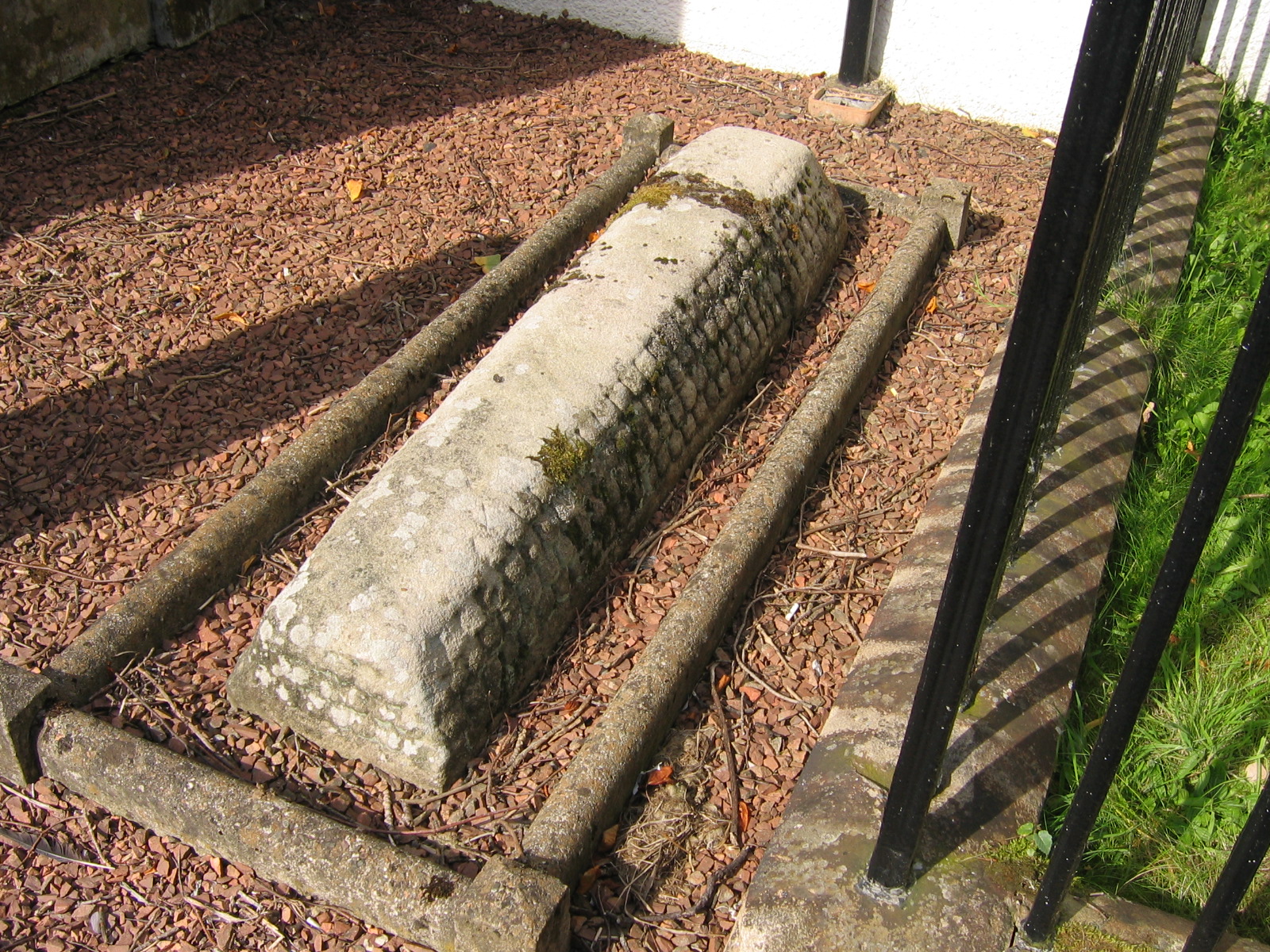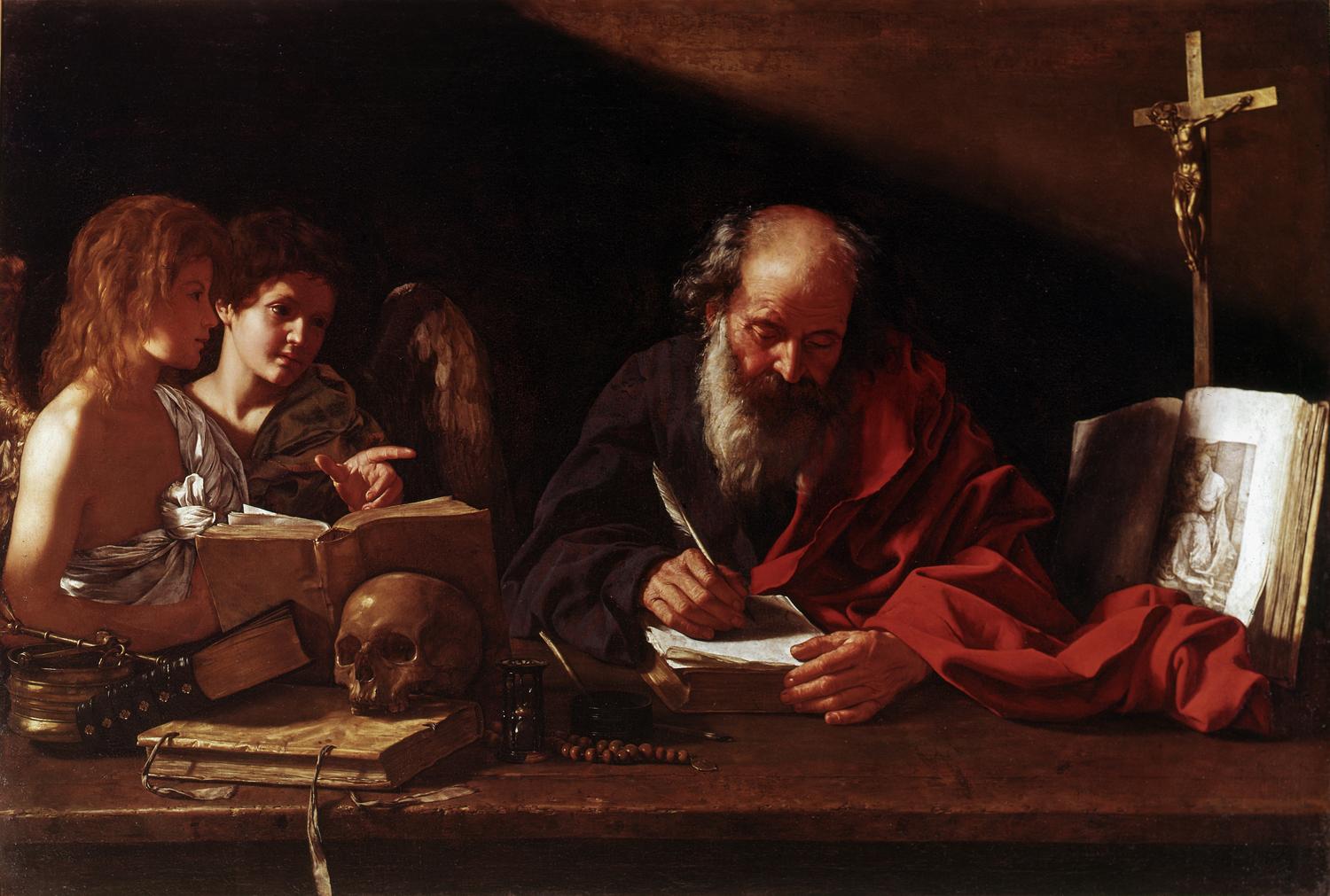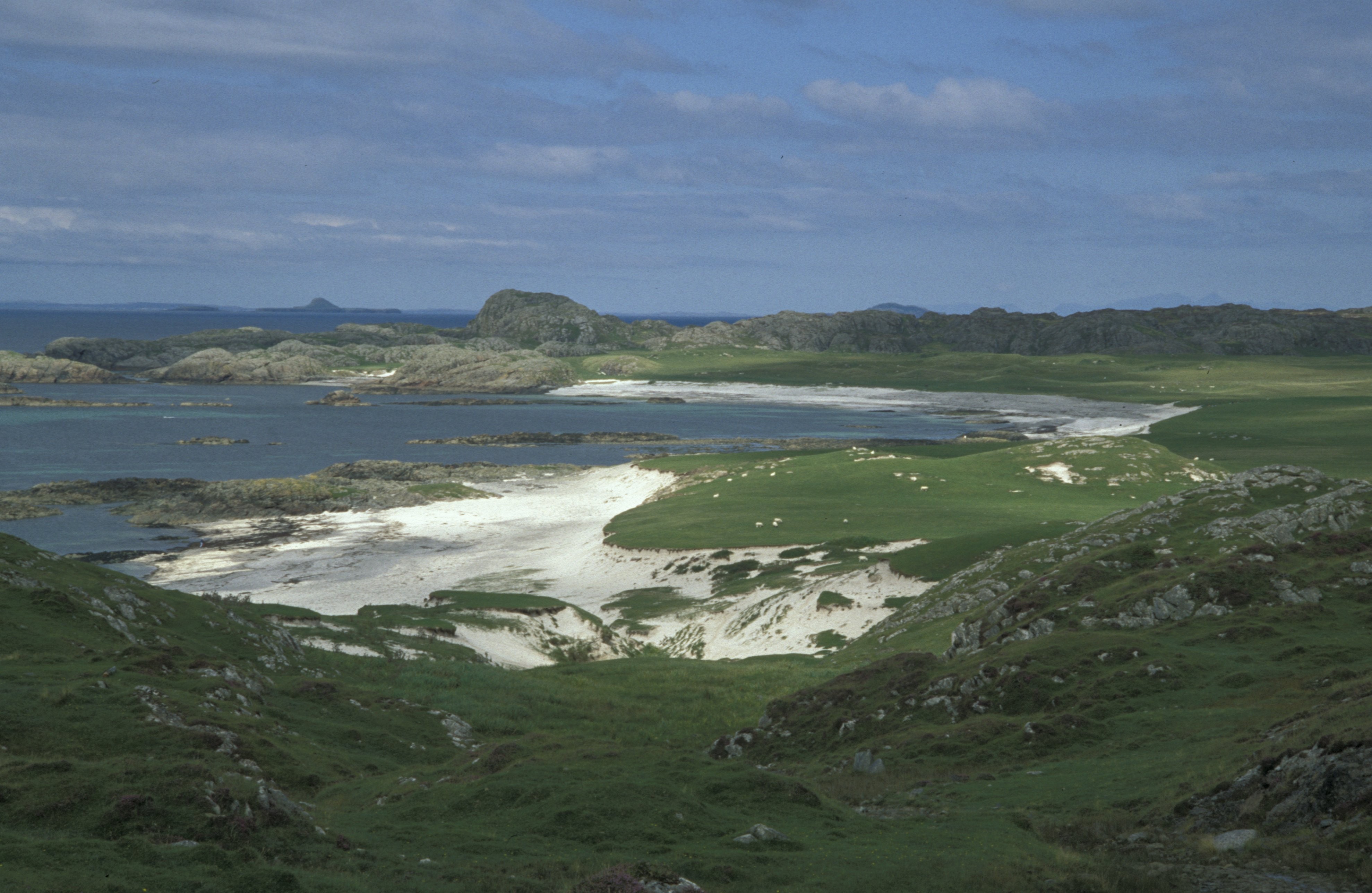|
Isle Of Inchcolm
Inchcolm (from the Scottish Gaelic "Innis Choluim", meaning Columba's Island) is an island in the Firth of Forth in Scotland. The island has a long history as a site of religious worship, having started with a church, which later developed into a monastery and a large Augustine Abbey in the mid 13th century. It was repeatedly attacked by English raiders during the Wars of Scottish Independence, and was later fortified extensively with gun emplacements and other military facilities during both World Wars to defend nearby Edinburgh. Inchcolm Abbey and the surrounding island are now in the care of Historic Scotland. The island is accessible to visitors during the day via private boat tours from Queensferry. Many of the religious buildings on Inchcolm remain in fair condition and Inchcolm is described as having the best-preserved cloister in Scotland. Geography Inchcolm lies in the Firth of Forth off the south coast of Fife opposite Braefoot Bay, east of the Forth Bridge, south o ... [...More Info...] [...Related Items...] OR: [Wikipedia] [Google] [Baidu] |
Columba
Columba () or Colmcille (7 December 521 – 9 June 597 AD) was an Irish abbot and missionary evangelist credited with spreading Christianity in what is today Scotland at the start of the Hiberno-Scottish mission. He founded the important abbey on Iona, which became a dominant religious and political institution in the region for centuries. He is the patron saint of Derry. He was highly regarded by both the Gaels of Dál Riata and the Picts, and is remembered today as a Catholic saint and one of the Twelve Apostles of Ireland. Columba studied under some of Ireland's most prominent church figures and founded several monasteries in the country. Around 563 AD he and his twelve companions crossed to Dunaverty near Southend, Argyll, in Kintyre before settling in Iona in Scotland, then part of the Ulster kingdom of Dál Riata, where they founded a new abbey as a base for spreading Celtic Christianity among the pagan Northern Pictish kingdoms. He remained active in Irish politics ... [...More Info...] [...Related Items...] OR: [Wikipedia] [Google] [Baidu] |
Lothian
Lothian (; ; ) is a region of the Scottish Lowlands, lying between the southern shore of the Firth of Forth and the Lammermuir Hills and the Moorfoot Hills. The principal settlement is the Scottish capital, Edinburgh, while other significant towns include Livingston, Linlithgow, Bathgate, Queensferry, Dalkeith, Bonnyrigg, Penicuik, Musselburgh, Prestonpans, Tranent, North Berwick, Dunbar and Haddington. Historically, the term Lothian referred to a province encompassing most of what is now southeastern Scotland. In the 7th century it came under the control of the Anglian kingdom of Bernicia, the northern part of the later kingdom of Northumbria, but the Angles' grip on Lothian was weakened following the Battle of Nechtansmere in which they were defeated by the Picts. Subsequent Scottish history saw the region subdivided into three counties—Midlothian, East Lothian, and West Lothian—leading to the popular designation of "the Lothians". Etymology The ori ... [...More Info...] [...Related Items...] OR: [Wikipedia] [Google] [Baidu] |
Hogback (sculpture)
Hogbacks are rock (geology), stone carved Anglo-Scandinavian style sculptures from 10th- to 12th-century northern England and south-west Scotland. Singular hogbacks were found in Ireland and Wales. Hogbacks fell out of fashion by the beginning of the 11th century. Their function is generally accepted as Grave (burial), grave markers. Similar later grave markers have been found in Scandinavia. In Cornwall similar stones are known as ''coped stones''. Geography and description Hogbacks take the form of recumbent monuments, generally with a curved ('hogbacked') ridge, often also with outwardly curved sides. This shape, and the fact that they are frequently decorated with 'Roof shingle, shingles' on either side of the central ridge, show that they are stylised 'houses' for the dead. The 'house' is of a Scandinavian Mead hall, longhouse type associated with the 'mead hall' feasting at Valhalla in pre-Christian Norse religion. One theory is that hogbacks originated among the Danish peop ... [...More Info...] [...Related Items...] OR: [Wikipedia] [Google] [Baidu] |
Dark Ages (historiography)
The ''Dark Ages'' is a term for the Early Middle Ages (–10th centuries), or occasionally the entire Middle Ages (–15th centuries), in Western Europe after the fall of the Western Roman Empire, which characterises it as marked by economic, intellectual, and cultural decline. The concept of a "Dark Age" as a historiographical periodization originated in the 1330s with the Italian scholar Petrarch, who regarded the post-Roman centuries as "dark" compared to the "light" of classical antiquity.. Reprinted from: The term employs traditional black-and-white dualism, light-versus-darkness imagery to contrast the era's supposed ''darkness'' (ignorance and error) with earlier and later periods of ''light'' (knowledge and understanding). The phrase ''Dark Age(s)'' itself derives from the Latin ''saeculum obscurum'', originally applied by Caesar Baronius in 1602 when he referred to a tumultuous period in the 10th and 11th centuries. The concept thus came to characterize the entire Middle ... [...More Info...] [...Related Items...] OR: [Wikipedia] [Google] [Baidu] |
Oratory (worship)
In the canon law of the Catholic Church, an oratory is a place which is set aside by permission of an ordinary for divine worship, for the convenience of some community or group of the faithful who assemble there, but to which other members of the faithful may have access with the consent of the competent superior. The word ''oratory'' comes from the Latin verb ''orare'', to pray. History Oratories seem to have been developed in chapels built at the shrines of martyrs, for the faithful to assemble and pray on the spot. The oldest extant oratory is the Archiepiscopal Chapel in Ravenna (). The term is often used for very small structures surviving from the first millennium, especially in areas where the monasticism of Celtic Christianity was dominant; in these cases it may represent an archaeological guess as to function, in the absence of better evidence. Public, semi-public, private Previously, canon law distinguished several types of oratories: private (with use restricted to ... [...More Info...] [...Related Items...] OR: [Wikipedia] [Google] [Baidu] |
Hermit
A hermit, also known as an eremite (adjectival form: hermitic or eremitic) or solitary, is a person who lives in seclusion. Eremitism plays a role in a variety of religions. Description In Christianity, the term was originally applied to a Christian who lives the eremitic life out of a religious conviction, namely the Catholic spirituality#Desert spirituality, Desert Theology of the Old Testament (i.e., the 40 years wandering in the Zin Desert, desert that was meant to bring about a change of heart). In the Christian tradition the eremitic life is an early form of Monk, monastic living that preceded the monastic life in the cenobium. In chapter 1, the Rule of St Benedict lists hermits among four kinds of monks. In the Roman Catholic Church, in addition to hermits who are members of religious institutes, the Canon law (Catholic Church), Canon law (canon 603) recognizes also Consecrated life#Other forms of consecrated life, diocesan hermits under the direction of their diocesan b ... [...More Info...] [...Related Items...] OR: [Wikipedia] [Google] [Baidu] |
Iona
Iona (; , sometimes simply ''Ì'') is an island in the Inner Hebrides, off the Ross of Mull on the western coast of Scotland. It is mainly known for Iona Abbey, though there are other buildings on the island. Iona Abbey was a centre of Gaelic monasticism for three centuries and is today known for its relative tranquility and natural environment. It is a tourist destination and a place for spiritual retreats. Its modern Scottish Gaelic name means "Iona of (Saint) Columba" (formerly anglicised as "Icolmkill"). In 2019, Iona's estimated population was 120. In March 1980, the Hugh Fraser Foundation donated much of the main island (and its off-lying islands) to the current owner, the National Trust for Scotland. The abbey and some church buildings are owned by the Iona Cathedral Trust. One publication, describing the religious significance of the island, says that the island is "known as the birthplace of Celtic Christianity in Scotland,” and notes that “St Columba came here ... [...More Info...] [...Related Items...] OR: [Wikipedia] [Google] [Baidu] |
Dunkeld Cathedral
Dunkeld Cathedral is a Church of Scotland place of worship which stands on the north bank of the River Tay in Dunkeld, Perth and Kinross, Scotland. Built in square-stone style of predominantly grey sandstone, the cathedral proper began in 1260 and was completed in 1501. It stands on the site of the former Culdee Monastery of Dunkeld, stones from which can be seen as an irregular reddish streak in the eastern gable. It is not formally a 'cathedral', as the Church of Scotland nowadays has neither cathedrals nor bishops, but it is one of a number of similar former cathedrals which has continued to carry the name. History Because of the long construction period, the cathedral shows mixed architecture. Gothic architecture, Gothic and Norman architecture, Norman elements are intermingled throughout the structure. Although partly in ruins, the cathedral is in regular use today and is open to the public. Relics of Columba, Saint Columba, including his bones, were said to have been ke ... [...More Info...] [...Related Items...] OR: [Wikipedia] [Google] [Baidu] |
Irish People
The Irish ( or ''Na hÉireannaigh'') are an ethnic group and nation native to the island of Ireland, who share a common ancestry, history and Culture of Ireland, culture. There have been humans in Ireland for about 33,000 years, and it has been continually inhabited for more than 10,000 years (see Prehistoric Ireland). For most of Ireland's recorded history, the Irish have been primarily a Gaels, Gaelic people (see Gaelic Ireland). From the 9th century, small numbers of Vikings settled in Ireland, becoming the Norse-Gaels. Anglo-Normans also Norman invasion of Ireland, conquered parts of Ireland in the 12th century, while Kingdom of England, England's 16th/17th century Tudor conquest of Ireland, conquest and Plantations of Ireland, colonisation of Ireland brought many English people, English and Scottish Lowlands, Lowland Scottish people, Scots to parts of the island, especially the north. Today, Ireland is made up of the Republic of Ireland (officially called Republic of Irela ... [...More Info...] [...Related Items...] OR: [Wikipedia] [Google] [Baidu] |
Antonine Wall
The Antonine Wall () was a turf fortification on stone foundations, built by the Romans across what is now the Central Belt of Scotland, between the Firth of Clyde and the Firth of Forth. Built some twenty years after Hadrian's Wall to the south, and intended to supersede it, while it was garrisoned it was the northernmost frontier barrier of the Roman Empire. It spanned approximately and was about high and wide. Lidar scans have been carried out to establish the length of the wall and the Roman distance units used. Security was bolstered by a deep ditch on the northern side. It is thought that there was a wooden palisade on top of the turf. The barrier was the second of two "great walls" created by the Romans in Great Britain in the second century AD. Its ruins are less evident than those of the better-known and longer Hadrian's Wall to the south, primarily because the turf and wood wall has largely weathered away, unlike its stone-built southern predecessor. Construction be ... [...More Info...] [...Related Items...] OR: [Wikipedia] [Google] [Baidu] |
Cramond
Cramond Village (; ) is a village and suburb in the north-west of Edinburgh, Scotland, at the mouth of the River Almond where it enters the Firth of Forth. The Cramond area has evidence of Mesolithic, Bronze Age and Roman activity. In modern times, it was the birthplace of the Scottish economist John Law (1671–1729). Cramond was incorporated into the City of Edinburgh by the Edinburgh Boundaries Extension and Tramways Act 1920 ( 10 & 11 Geo. 5. c. lxxxvii). Etymology It was once believed that Cramond Roman Fort was known to the Romans as ''Alaterva''. A stone altar was dug up in the grounds of Cramond House dedicated "To the Alatervan Mothers and the Mothers of the Parade-ground."Site Record for Cramond Edinburgh, Cramond Roman Fort Details – Royal Commission on the A ... [...More Info...] [...Related Items...] OR: [Wikipedia] [Google] [Baidu] |
Roman Empire
The Roman Empire ruled the Mediterranean and much of Europe, Western Asia and North Africa. The Roman people, Romans conquered most of this during the Roman Republic, Republic, and it was ruled by emperors following Octavian's assumption of effective sole rule in 27 BC. The Western Roman Empire, western empire collapsed in 476 AD, but the Byzantine Empire, eastern empire lasted until the fall of Constantinople in 1453. By 100 BC, the city of Rome had expanded its rule from the Italian peninsula to most of the Mediterranean Sea, Mediterranean and beyond. However, it was severely destabilised by List of Roman civil wars and revolts, civil wars and political conflicts, which culminated in the Wars of Augustus, victory of Octavian over Mark Antony and Cleopatra at the Battle of Actium in 31 BC, and the subsequent conquest of the Ptolemaic Kingdom in Egypt. In 27 BC, the Roman Senate granted Octavian overarching military power () and the new title of ''Augustus (title), Augustus'' ... [...More Info...] [...Related Items...] OR: [Wikipedia] [Google] [Baidu] |









